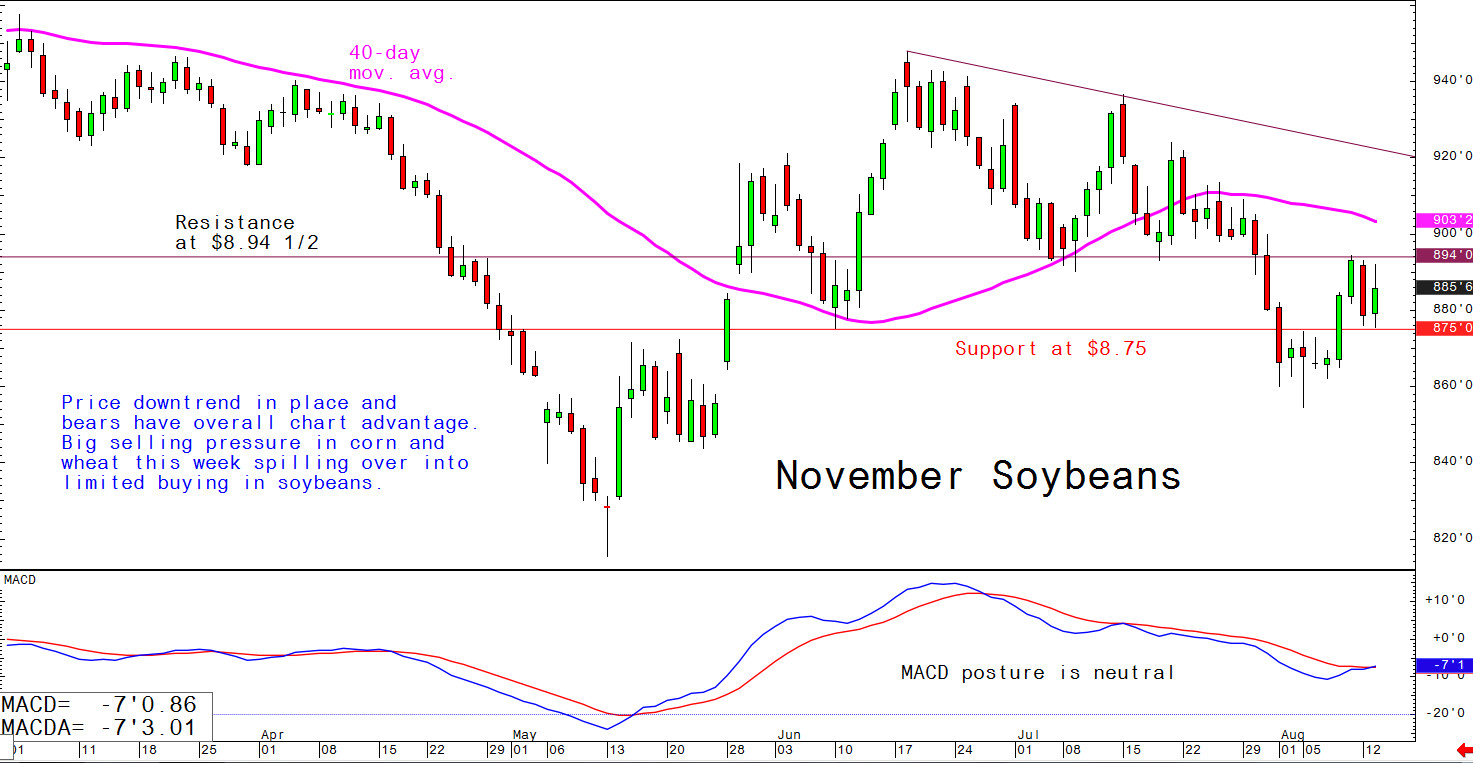



Daily US grain report: grains pressured by mostly bearish USDA report
US grain futures prices were mixed in overnight trading, following Monday's highly anticipated USDA monthly supply and demand report, which was deemed very bearish for corn and wheat and friendly for soybeans.Corn was down 10 to 12 cents in the nearby contracts, soybeans up around 7 cents and wheat off 1 to 2 cents.
US corn futures settled down the 25-cent daily trading limit Monday. Daily trading limits expand to 40 cents for Tuesday. Corn traders reacted negatively to USDA's forecasting the US corn crop size around 700 million bushels larger than traders expected. The new-crop marketing year ending stocks were around 550 million bushels more than anticipated. The surprising corn data from the government puts into more focus the Pro Farmer Midwest Crop Tour next week, as scouts will gather samples from seven Corn Belt states.

© Jim Wyckoff
Soybean traders did not get a dose of bearish news in Monday's USDA data.
However, the pounding seen in corn and wheat futures spilled over into selling pressure in soybeans. USDA's first soybean crop estimate came in 120 million bu. below what traders anticipated and 165 million bu. below the July projection. USDA estimated U.S. planted soybean acreage at 76.700 million, down 3.34 million acres from June. USDA estimated the national average soybean yield at 48.5 bu. per acre, unchanged from the July projection.

© Jim Wyckoff
Wheat futures tumbled after the USDA reports, with most HRW and spring wheat futures setting new contract lows. USDA's increase in the US average wheat yield boosted total supplies by 59 million bushels from the July report.
USDA cut estimated food use 5 million bushels, to 960 million and increased estimated feed and residual use 20 million bushels, to 170 million.
Estimated 2019-20 US wheat exports were also increased 25 million bushels to 975 million. The USDA world wheat production forecast was reduced from a month ago but still left global output up 37.5 million metric tons from a year ago.
There is more protesting by the citizens of Hong Kong, which has again shut down the city's main airport. This situation is escalating and the world marketplace is now sensing some real trouble brewing in the Asian region.
Pressure is building on mainland China to quell the civil unrest. The US-China trade war is also escalating, with some Wall Street firms now advising their clients the US-China trade conflict could deteriorate into a "cold war" similar to what the US and Russia had for three decades.
Throw in North Korea test-firing missiles, the US-Iran stand-off and political unrest in Argentina and traders/investors have a whole bunch of worry simmering and maybe coming to a boil on the front burners of the world marketplace. This is a significantly bearish underlying factor for the grain markets.
Worries about slowing global economic growth were further stoked Tuesday when the closely watched German ZEW economic current conditions index in August had a reading of -13.5 versus -1.1 in July. The economic expectations component had a reading of -44.1 in August versus -34.5 in July. Germany is the economic workhorse of the European Union.
Corn Belt weather this week sees temperatures rising a bit, but with scattered rainfall expected in the region. It's nearing mid-August now, and the window is closing on any heat/dry stress developing for the soybean crops. The next major weather threat would be an early frost in the Corn Belt.










